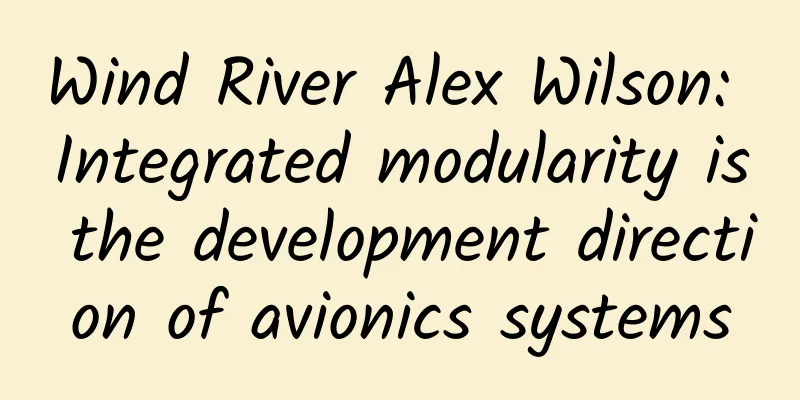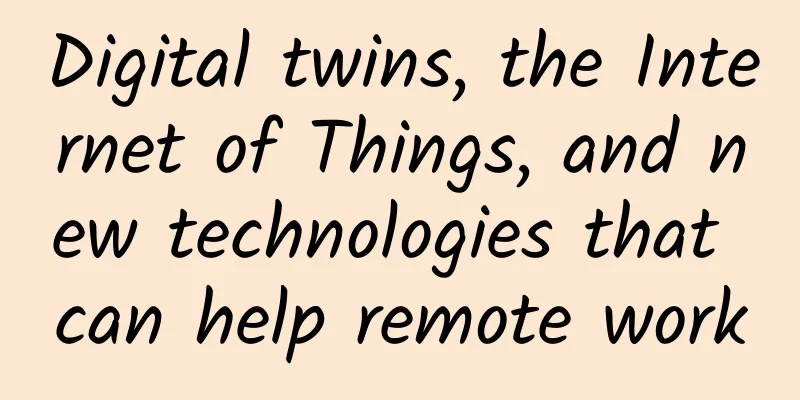Wind River Alex Wilson: Integrated modularity is the development direction of avionics systems

|
[51CTO.com original article] At the just concluded 7th International Forum on Civil Aircraft Avionics, Mr. Alex Wilson, Director of Business Development for the Aviation and Defense Industry at Wind River Systems, a leading global provider of intelligent interconnected system software, delivered a keynote speech. After the forum, 51CTO had the honor of interviewing Mr. Alex Wilson and had an in-depth discussion on hot topics such as the mainstream development trend of the future aviation industry and Wind River's latest achievements in avionics systems. Mr. Alex Wilson from Wind River UK has many years of R&D and operation experience in aviation electronic control systems. Before joining Wind River, he worked for British Aerospace and Motorola Computer Division, responsible for the development of automated testing and real-time operating systems. After joining Wind River in 1996, he worked as a field application engineer, responsible for supporting VxWorks and Tornado. In 2002, Alex worked as the European Business Development Manager of Wind River, engaged in aerospace and defense market development. In the interview, as a senior aviation electronic control expert, he not only shared with us the development of mainstream avionics systems, but also fully affirmed China's achievements in the development of aviation.
Main Trends of Future Aviation Industry Alex believes that the overall development trend of the aviation industry is that aircraft and the equipment of the entire aviation industry will become more intelligent. The equipment and network inside the aircraft must take care of the safety and comfort of passengers. The data communication between the aircraft and the ground must help aviation companies improve efficiency and reduce costs, and also serve the enforcement of regulations by aviation management agencies. From the demand perspective, passengers have more and more requirements for onboard functions, which are becoming more and more professional, which will bring pressure on cost efficiency. At the same time, the challenges faced by aviation system safety are becoming more severe. The development trend at the technical level is electronicization and softwareization, so as to reduce the size, weight and power consumption of airborne equipment while increasing functionality and improving safety. From the perspective of the industrial chain, we will usher in more and more global procurement and cooperation, national boundaries will be broken more frequently, and the forms of competition and cooperation between countries will become more diversified. From federated to modular Talking about specific business, Alex admitted that integrated modularization is the development direction of avionics control systems. Traditional joint avionics systems are equipped with independent computer control systems in different parts of the aircraft, while integrated modular systems centralize these independent systems and implement them with fewer computers, thereby reducing the space and power consumption of computer control equipment. At the same time, because more functions are implemented through software instead of dedicated hardware as in the past, the update cycle of various functions is accelerated and the adaptability is improved. Due to the demand for diversified functions, more systems need to be connected to undertake more functions in a smaller space with lighter weight and lower power consumption. This is the so-called SWaP (Space, Weight, and Power). It also includes a significant reduction in cabin wiring, so hardware consolidation is needed. The performance of a single-core processor is completely limited by the clock frequency. The maturity and popularity of multi-core processors have laid the foundation for hardware centralization, which can run more software on fewer processors, but resource sharing will bring great challenges to security. Research on multi-core processor architecture has revealed many problems that were not encountered when designing avionics systems for single-core processors. This problem can basically be summarized into three aspects: first, the difficulty of system integration is greater; second, the complexity of design and certification is higher; third, the experience in the industry supply chain is not rich enough and needs further accumulation. Wind River Sets New Standard for Avionics System Security From the beginning, Wind River has created and inherited a large number of certified platform assets and used them as standard COTS platforms, providing rich functions and great flexibility for future integrated modular avionics systems. As early as 2000, Wind River released the first certifiable platform, VxWorks Cert 5.4, which is used for safety-critical DO-178B and 61508. After nearly 20 years of development, Wind River continues to bring new features to its safety and reliability product portfolio. It can be said that VxWorks 653 has been driving the evolution of industry standards and promoting the formation of a broad ecosystem among customers, partners and avionics suppliers. It supports the coexistence of safety and non-safety application software with a single operating system. Sharing the same hardware platform with isolation in time and space is a unique technical capability in the industry. Since its launch, VxWorks 653 has been used as the technology for many manned and unmanned commercial, space, security and mission-critical projects around the world. It has been successfully used in many key projects, including Airbus and Boeing commercial and military aircraft, such as the Airbus A400M and Boeing 787, NASA space vehicles and advanced automated vehicles. The greatest value of VxWorks 653 is that it enables the rapid integration of products from multiple application software providers, sharing the same IMA computing platform, and organically integrating multiple suppliers and the role-based supply chain standard RTCA DO-297. With robust partitioning, coupled with development and verification tools that meet RTCA DO-330 quality requirements, VxWorks 653 allows system components to be updated independently without the need for comprehensive testing of the entire system. These capabilities and qualities save customers a large amount of testing and certification work each year, worth millions of dollars, while accelerating time to market and deployment. The above capabilities have been verified in more than 400 projects in more than 80 models of civil and military aircraft. Recently, VxWorks 653 Multi-Core Edition passed an important milestone, which is the addition of full support for Intel platforms. In the past few years, Intel multi-core hardware has become an excellent platform for many software for the aerospace and defense industry and the transportation industry, as well as similar industries that require strong computing power and have extremely high requirements for safety and reliability. VxWorks 653 Multi-Core Edition can fully utilize the CPU technology advances provided by Intel architecture while complying with the ARINC 653 specification of the Integrated Modular Avionics System (IMA). VxWorks 653 has been driving the evolution of industry standards and fostering a broad ecosystem among customers, partners and avionics suppliers. It supports the coexistence of safety and non-safety applications with a single operating system. The ability to share the same hardware platform with isolation in time and space is unique in the industry. 2017 was a successful year for Wind River in the field of avionics systems. VxWorks 653 obtained the compatibility certification of the "Future Airborne Capability Certified Environment" and became part of the "FACE Technical Standard Operating System Domain (OSS) Security Foundation Configuration". To date, it is still the only FACE operating system that meets industry standard compatibility. Since then, Wind River has released VxWorks 653 Multi-core Edition for multi-core IMA systems, including the official version for PowerPC architecture and the initial version for Intel architecture. By the end of the year, Wind River VxWorks 653 won the Military & Aerospace Electronics Innovation Awards for the second time, which once again affirmed the value and capabilities of this industry-leading product. Let us look forward to Wind River making greater contributions to all mankind in the field of avionics. [51CTO original article, please indicate the original author and source as 51CTO.com when reprinting on partner sites] |
Recommend
Review of the top ten 5G trends in 2021: coverage, applications, and a future
Looking back at the communications industry this ...
How to design a scalable and flexible cabling system for data centers?
Cabling is an essential part of any data center b...
Linode: Free $100 for new users, cloud servers in 11 data centers starting at $5/month
Linode is a VPS cloud hosting company that has be...
The three major operators’ annual data for 2021 were released. How is their performance?
In a blink of an eye, the Spring Festival holiday...
PTC acquires next-generation application lifecycle management company
PTC (NASDAQ: PTC ) today announced that i...
VMISS newly launched Korean VPS with 30% discount, 1G memory package starts from 3.5 Canadian dollars (≈ RMB 18) per month
In May this year, we shared information about VMI...
How can you explain the communication protocol in such a simple way?
This article is reprinted from the WeChat public ...
Important factors of data center energy efficiency: latent heat and sensible heat
Talking about the PUE value of data centers has a...
[Black Friday] SaltyfishTech: 499 yuan/year-4 cores/4GB/50G SSD/1TB@150Mbps/Germany 9929 line
SaltyfishTech also released a special Black Frida...
HostNamaste: $18/year-1.5GB/30GB/1.5TB Los Angeles & Dallas data centers
HostNamaste is a foreign hosting company founded ...
How does private 5G impact Industry 4.0 transformation?
Private 5G networks have become very popular as r...
What is the current status of 6G and when will it arrive?
6G will bring many improvements in many areas, bu...
How to set IP addresses for network monitoring projects with more than 254 points?
Many friends have asked, how to set the IP addres...
SD-WAN’s reputation
1 Introduction This article reviews ETSI GS MEC 0...
MWC2023 China Telecom-Huawei Cloud Network Core Capabilities Innovation Achievements Global Conference Held
On February 28, the MWC2023 China Telecom-Huawei ...









